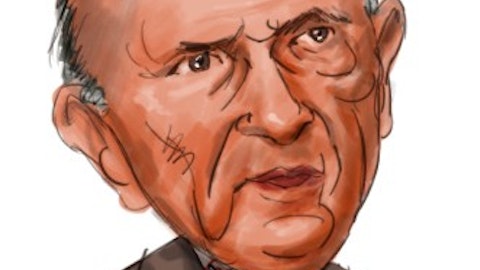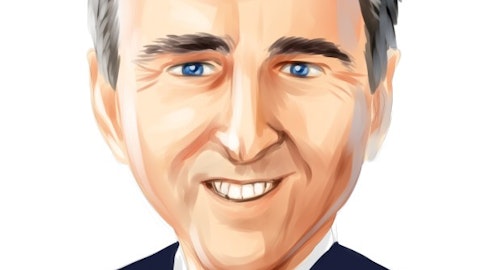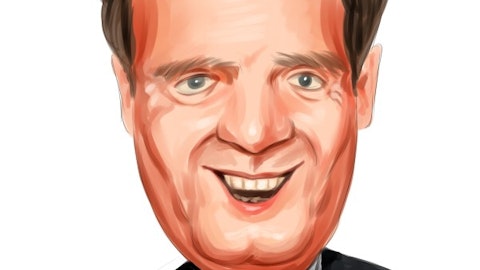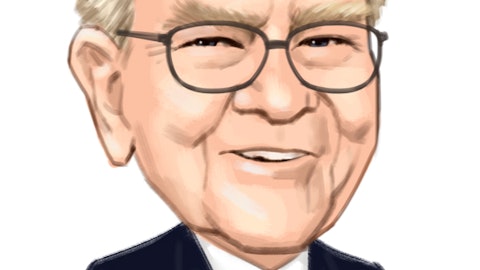Warren Buffett’s Berkshire Hathaway outperformed the S&P 500 by 11.1% per year from 1965-2015, generating an overall gain of 1,598,284% compared to the market’s total return of 11,355%.
It’s no wonder why investors closely monitor Warren Buffett’s portfolio. He is arguably the greatest investor of all time.
While Berkshire Hathaway itself does not pay a dividend because it prefers to reinvest all of its earnings for growth, Warren Buffett has certainly not been shy about owning shares of dividend-paying stocks, and we will analyze each of Buffett’s dividend stocks in this article.
A dividend is often the sign of a financially healthy and stable business that is committed to rewarding shareholders. These are some of the qualities Warren Buffett looks for when he invests.
May 2016 Portfolio Update
On Monday, May 16, 2016, new information was released about Berkshire Hathaway’s portfolio. At the end of March 2016, Warren Buffett owned a total of 44 publicly-traded stocks. Interestingly enough, 32 of these holdings pay a dividend, and several of them are high-yield dividend stocks with yields in excess of 4%.
As we expected, Warren Buffett sold off his remaining shares of AT&T (T) during the first quarter of 2016. Buffett also continued purchasing more shares of International Business Machines (IBM), which is still down about 15% over the last year but has bounced back a bit during the year. IBM has a very safe dividend yield near 3.8% but continues struggling to generate sales growth.
By far, the biggest news was Warren Buffett’s new position in Apple (AAPL). Buffett has historically steered clear of the technology sector, and his bet only other tech bet (IBM) has yet to pay off. Berkshire’s stake in Apple is valued at about $1 billion, and in some ways his wager on the company is not overly surprising.
Apple possesses one of the most powerful brands in the world, and the company currently trades at only 10 times trailing earnings. Apple has consistently earned a very high return on equity over the last decade and has over $55 billion in cash it can use on growth investments, share repurchases, and dividend increases. Buffett likely believes that Apple will be able to leverage its iconic brand and giant pile of cash to successfully tap into growth markets outside of smartphones over the next decade.
While the market is currently down on Apple because its core growth driver (smartphones) has cooled off, Buffett is looking further ahead at where Apple will be 10 years from now, and he apparently likes what he sees.
Warren Buffett’s Investment Strategy

Source: Jeff Kowalsky/Bloomberg
Warren Buffett has evolved as an investor since launching his original partnership in 1956. Back then, Warren Buffett’s portfolio was much smaller in size and allowed him to pursue the greatest inefficiencies he could find in the market almost irregardless of the stock’s market cap. He focused intensely on finding stocks trading at cheap valuations.
Buffett was not afraid to make a single position account for more than 25% of his portfolio and stated that he would be comfortable investing up to 40% of his net worth in a single security if the probabilities were deemed to be extremely in his favor, limiting risk.
Warren Buffett’s portfolio remains concentrated today, and his largest position accounts for just under 20% of Berkshire Hathaway’s portfolio. The idea behind running a concentrated portfolio is that there are relatively few excellent businesses and investment opportunities in the market at any given time, and owning too many positions reduces the impact from your few best ideas.
Importantly, Warren Buffett’s investment strategy has always been focused on the concept of staying within one’s circle of competence. Buffett has said that “risk comes from not knowing what you’re doing.”
In other words, never invest in a business or industry that is too hard for you to understand. The reality is, most investment opportunities fall outside of our circle of competence and should be ignored. Playing to your strengths is one of several tips to pick safer dividend stocks.
Since the days of his initial partnership, Buffett’s strategy has evolved to concentrate more on buying up wonderful businesses at reasonable prices rather than digging through the bargain bin for “cheap” stocks. He looks for companies that have strong economic moats and numerous opportunities for growth.
When Warren Buffett makes an investment, he has said that his favorite holding period is “forever.” The idea is to buy excellent companies with solid long-term growth prospects and let them compound over the long run.
Not surprisingly, our dividend investment philosophy shares many similarities with Warren Buffett’s. For that reason, it’s helpful to review the high-yield dividend stocks owned by Berkshire Hathaway.





